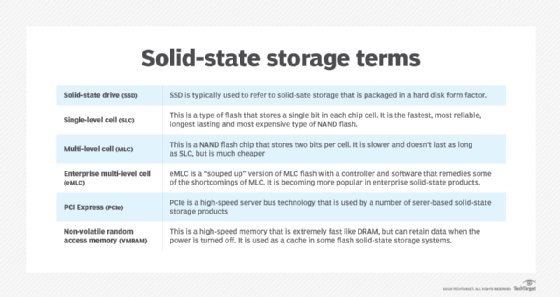Should I be concerned about SSD lifespan?
HDD and RAID vendors have stirred up FUD around the lifespan of SSD drive cells, but companies considering solid-state don't have to worry about arrays wearing out.
Concerns persist about SSD lifespan, but flash wear-out is no longer an issue.
In early solid-state drives, testing using repetitive writes could kill a drive in weeks. The SSD industry responded by studying the physical properties of cells to find ways to optimize write waveforms and voltage thresholds to improve write quality.
Similarly, read cycles have been tuned for cell-to-cell interactions and to improve cell voltage sensing. Mathematicians have developed effective error-correction approaches, too.
Fear of drives wearing out was the main reason early enterprise flash systems used simple, single-level cell (SLC) SSDs. In the first days of enterprise flash arrays, multi-level cell (MLC) drives were considered adequate only for consumer devices. But wear life has improved so much that there are hardly any SLC devices left in use. MLC has become common in enterprise arrays due mainly to wear-leveling software that spreads data to different blocks in a drive.

How long do SSDs last?
Vendors specify wear life for each drive. SSD lifespan can vary quite a bit across product families because vendors use part of the drive's capacity as spare sectors as cells age to extend the life of the drive.
Typically, SSD lifespan is in the form of a guarantee that block loss will not occur through wear for five years (for example) with a given number of full-drive daily write operations. This enables customers to find drives that match their use cases.
For example, buying a drive with 0.2 daily writes for five years makes sense if the drive is used to archive data that rarely changes because each block is likely to see only one or two writes over its life. On the other hand, a primary, ultra-fast NVMe drive in a database may need five daily writes, but the price is higher.








